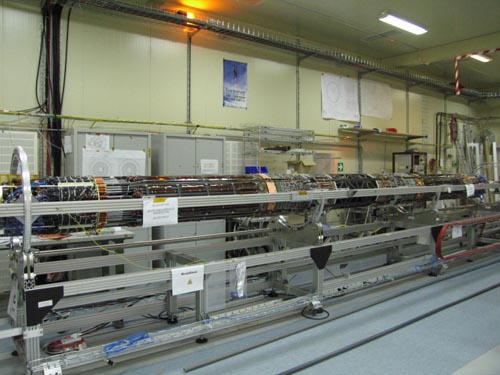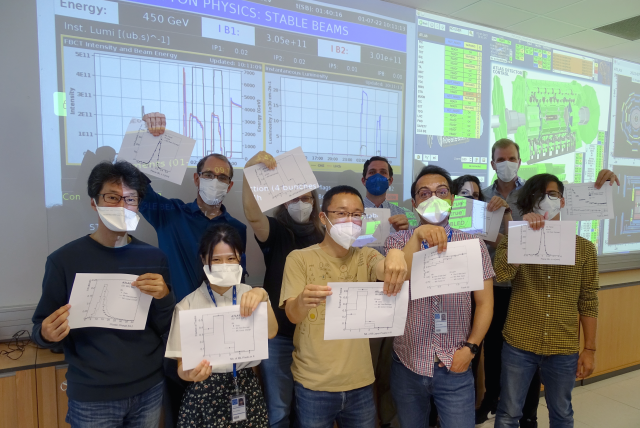The pixels find their way to the heart of ATLAS
28 June 2007 | By

Leading up to the lowering of the pixel detector into the ATLAS cavern, final preparations were proceeding quickly. The 7-meter-long segment of the Beryllium beampipe was received then integrated into the innermost layer of the Pixel Detector in December 2006. This innermost layer is referred to as the B-layer because of the powerful role it plays in finding the secondary vertices that are the key signature for the presence of b-quarks, and with somewhat greater difficulty, c-quarks and tau leptons.
In January this year, the pixel detector team had largely completed the central 1.5m long detector, including the three barrel layers and the three disk layers on each end of the barrel. Although this region contains all of the 80 million readout channels, it cannot be integrated into the Inner Detector without additional services and infrastructure. Therefore, the next step was to add the service panels to the detector, including the optical links used for data transmission, and complete the 7m long Pixel Package by bringing all critical connections to the end of the inner detector volume.
During this integration process, the complete detector was extensively tested, finishing on June 1, and demonstrated to us that all of the power, temperature, cooling, and optical services were working for the complete pixel package, and that it was ready for installation.

After completing the last testing and integration checks, the pixel package was transferred to its final transport box. This was a delicate operation, because the clearances between the pixel package and the Support Tube are very small, at the level of 1mm.
On June 25, the day that the pixel package was to be lowered into the UX15 cavern, the weather turned bad, with lots of rain. The rain slowed to a light drizzle for precisely the 30 minutes required to transport the Pixel Detector from Building SR1 to SX1 (over the cavern), after which the poor weather resumed once more. Meanwhile, the Pixel Package was weighed one final time, and it was rapidly lowered onto the mini-vans on the open C-side of ATLAS.

After a day of alignment work, the transport box and its rail system were almost perfectly aligned with the Support Tube inside of the SCT, and the insertion could start. The pixel package was slowly pulled into position in the center of ATLAS over a period of roughly 24 hours. Sometimes the rate of movement was as high as a few cm per minute, while other times, it slowed to a positive crawl. After modifying some last small obstructions, the detector clicked into its final mounting fixtures at roughly noon on June 28, almost perfectly on schedule.
The present activities center around the preparation of the connections at the ends of the pixel package, where a veritable fountain of electrical, optical, and cooling services will eventually provide the necessary life support for the pixel detector to be operated. There is also intense activity preparing all of the off-detector electronics and the online software to be ready for the moment when the external services can finally be connected to the detector. It is hoped that by the end of this year, the remaining parts of the Inner Detector will all be integrated together (particularly the difficult components of the evaporative cooling system), and we will be ready to begin first operations of the pixel detector.



